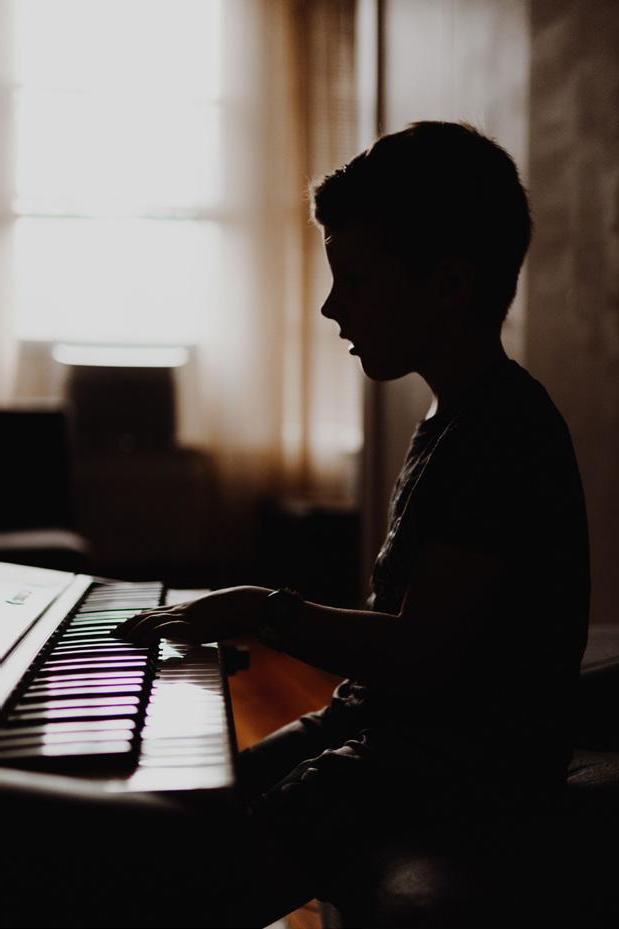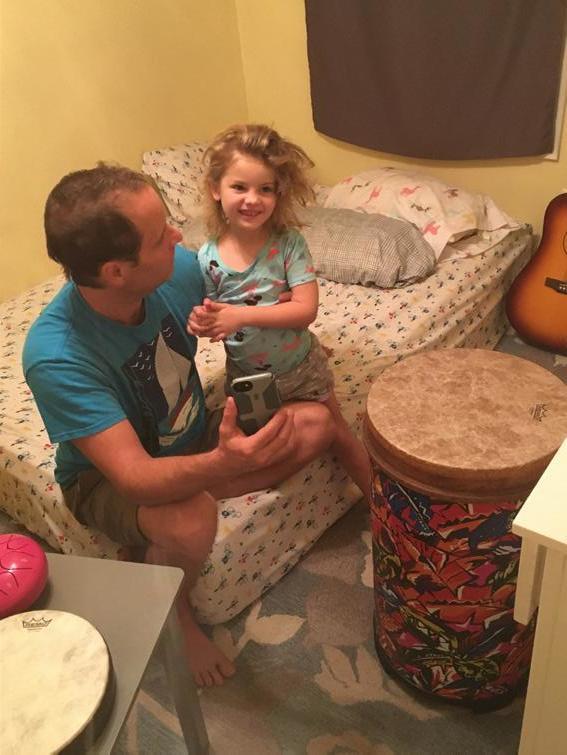
6 minute read
ASD and Music Therapy
How rhythm and music can help children with autism spectrum disorder.
By Caroline Betik
Five-year-old Emma Westerman loves sound.
She is more intrigued by the noises her toys make when she clashes them together than by the function they were designed to perform. She is easily amused listening to a squeaky door rock back and forth on its hinges for hours, and the guitar solo at the beginning of “Thunderstruck” by ACDC always makes her freeze, while a smile spreads across her face as she recognizes her favorite song.
“It’s pretty cute,” Emma’s mom, Julie Westerman says with a chuckle. “She is a dainty, petite, little thing, but she loves to play rough, and she likes heavy metal.”
Emma Westerman was diagnosed with autism spectrum disorder (ASD) as a toddler. When her mom discovered the Center for Music Therapy in a Facebook group for families with kids who have autism, she decided to give it a try with Emma. Over a year later, Julie says the way Emma responds to music — music therapy in particular — shows how much power is behind music.
Throughout history, music therapy has enabled people with ASD to learn to relate to others, communicate feelings and establish rhythms and relationships in their daily lives. Emma is one of many patients who has seen dramatic lifestyle improvements once she turned to music for treatment.
Hope Young, board-certified music therapist and president/owner of Center for Music Therapy, says the method of teaching through song and rhythm is a neurological phenomenon in which the whole brain activates at the same time.
“You can speak a rhythmic pattern like ‘good morning’ three times, and this will activate one side of your brain,” Young says. “But, you sing that, and all of a
sudden, you get multiple areas in your brain working together. So, a child who couldn’t speak learns to sing, and by proxy, learns to speak much more quickly.”
Julie says she is constantly singing to Emma and narrating what she is doing in threes so she learns words. Typically her songs are to the tune of “Row, Row, Row Your Boat.”
“Some of the very first words she’s said consistently started coming when we started practicing pausing songs and filling in words in songs and melodies, which is a technique I learned from music therapy,” Julie says. “I sing so much around her, and those are the words she uses the most now. Even washing her hands I sing, ‘It’s time to ... dry, dry, dry,’ and she will echo that with me.”
According to Young, rhythm and our ability to perceive rhythm is a highly advanced skill our brains, regardless of who you are, can recognize. This is part of the reason why music therapy is versatile in enabling patients to develop a range of skills from speech, attention to mobility and athletic enhancement.
Music has the ability to exercise mechanisms referred to as cognitive attention and cognitive listening which allow us to connect in a deeply embedded thought process, Young says. This, combined with exercising autobiographical memory, is a powerful tool, especially for those with autism.
Julie recognized the power of rhythm in daily life with her daughter through trial and error. She learned that saying words three times helped Emma better understand them, and Julie has noticed improvements in her speech and communication.

Photos courtesy of Julie Westerman
“Whenever we’re introducing a new word. I usually do it in threes, and it just seems to really work for her,” Julie says. “Something good that happened in the past month has been that things are starting to click, and she’s understanding now that she can say anything. And she’s excited to talk. She doesn’t always know what she’s saying, but she’ll repeat anything, which means we have to be a little more careful with our language. It’s been awesome, and I thank all of her therapists for it and music, too.”
Wendy Jimmerson says she has noticed a similar development in her daughter Abby who also has ASD. Over the 20 years she has been going to music therapy, Wendy says it never stops sparking new connections in her brain.
“I’ve always known how beneficial music is for the brain, so when Abby was five years old, I decided it would be a great form of therapy to try and see what it could do for her development,” Jimmerson says. “It ended up being a really good decision, because it was what assisted her brain to be able to string words together. In the last few years, they have combined her music input with gait training and endurance on the specialized treadmill they have in the clinic. It all works in tandem to get the results we want.”
Despite these things, Young says there is a clear distinction between music therapy and the kind of music we have all been accustomed to, which is what Hope calls, “music for music sake,” or music for entertainment purposes.
Music therapy, she says, is a doctor-ordered treatment for a disease, condition or diagnosis that is impairing a motor system or impairing perception of rhythm.
“Music is such a natural and normal part of human existence that we take it for granted,” Young says. “But there are types of music to help people, to heal people and then there is music therapy, which is to treat people. And there is a clear line between the two when you’re talking about music therapy, verses when you’re talking about the power of music.”
While most artists we know create music as a way to express emotions and feelings, the music used by the Center for Music Therapy is designed and prescribed for a specific purpose. Because the music prescribed to patients is meant to elicit a specific result, if unattained, the clinic could be held liable.

Photos Courtesy of Julie Westerman
Regardless, music is a common bridge that connects all people, whether designed to specifically treat patients or as a way to express emotion.
Through her daughter and the joy music has brought Emma in music therapy, Julie says she has learned to let go of expectations and invest in encouraging Emma’s interests.
“Music is something she loves, water is something she loves and so is movement,” Julie says. “So, our house is full of music toys and water toys and swings and slides and yoga balls and spinning chairs, which is a lot of fun.”

Photos Courtesy of Julie Westerman
Since COVID-19 put music therapy online, Julie says she noticed how pausing Emma’s busy schedule allowed her to establish a more natural rhythm in life, and of course, music therapy is still a part of that.
“Emma’s face is just pure joy when she finishes a music session, and it’s worth every penny,” Julie says. “And whenever she has music in the morning, it almost seems to reset the whole day, and she’s in a good mood usually, so we’re super grateful.”
Young says the Center’s tagline has become, “Music is our secret sauce of resiliency.”
“Music helps us stop and feel more human and more connected than any other experience in the world,” Young says. “We cannot forget we have in our hands and in our bodies the power to sing, hum, carry a tune, whatever it is. We need to stop thinking that to do music we have to be at the level of an artist, when really, you just need to be human.”










